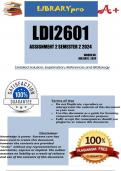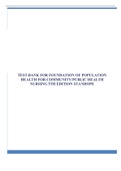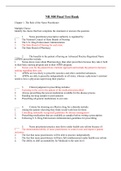Exam (elaborations)
LDI2601 Assignment 2 (COMPLETE ANSWERS) Semester 2 2024
- Institution
- University Of South Africa
LDI2601 Assignment 2 Full Solutions Semester 2 2024 ;100 % TRUSTED workings, Expert Solved, Explanations and Solutions. For assistance call or W.h.a.t.s.a.p.p us on ...(.+.2.5.4.7.7.9.5.4.0.1.3.2)........... LDI2601 ASSIGNMENT 2 S2 2024 SEMESTER 2 LABORATORY DIAGNOSTICS: ANIMAL HEALTH I The as...
[Show more]





